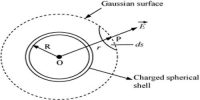The resistivity of a material is the characteristic of that particular material. The materials can be broadly classified into conductors and insulators. The metals and alloys which have low resistivity of the order of 10-6 – 10-8 Ω m are good conductors of electricity. They carry current without appreciable loss of energy.
Example: silver, aluminum, copper, iron, tungsten, nichrome, manganin, constantan.
The resistivity of metals increases with an increase in temperature. Insulators are substances that have very high resistivity of the order of 108 – 1014 Ω m. They offer very high resistance to the flow of current and are termed non−conductors.
Example: glass, mica, amber, quartz, wood, teflon, bakelite.
In between these two classes of materials lie the semiconductors (Table). They are partially conducting. The resistivity of the semiconductor is 10-2 – 104 Ω m. Example: germanium, silicon.
Resistivity, commonly symbolized by the Greek letter rho, (ρ). The unit of resistance is the ohm. In the meter-kilogram-second system, the unit of resistivity in ohm-meter. If lengths are measured in centimeters, resistivity may be expressed in units of ohm-centimeter.
Table: Electrical resistivities at room temperature

On the basis of resistivity, substances are classified as conductors, insulators, and resistors.
- Conductors are the substances which have very low electrical resistance.
- Insulators are the substances which have infinitely high resistance.
- Resistors are the substances with comparatively high resistance than conductors but low resistance than insulators.
The resistivity of semiconductors lies between conductors and insulators. Gold is a good conductor of electricity and so it has low resistivity. The glass is a good insulator that does not allow the flow of electrons. Hence, it has a high resistivity. Silicon is a semiconductor and so it allows partial movements of electrons. The resistivity for perfect conductors is zero and the resistivity for perfect insulators is infinite.
The resistivity differs from substance to substance –
All substances can be classified on the basis of their resistivity:-
(1) Substances showing very low resistivity – The material that exhibits very low resistivity allows electrical current to pass through them. So, the very low-resistivity compounds are called conductors.
(2) Substances showing moderate resistivity – Substances with moderate sensitivities give substantial resistance to the flow through them of electrical current. Such material, therefore, called resistors.
(3) Substances having high resistivity – The substances that have very high resistivity do not allow the flow of electricity through them. The material that does not allow the passage of electricity through them is called insulators.
A material with high resistivity means it has got high resistance and will resist the flow of electrons. A material with low resistivity means it has low resistance and thus the electrons flow smoothly through the material. For example, Copper and Aluminium have low resistivity. Good conductors have less resistivity. Insulators have a high resistivity. It can be seen that the resistivity of copper and the resistivity of brass both low and in view of their cost, relative to silver and gold, they become cost-effective materials to use for many wires. The resistivity of copper and its ease of use means that it is also used almost exclusively for the conductor material on printed circuit boards.














